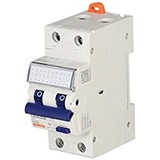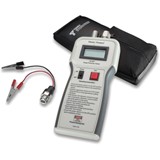The seasonally adjusted Australian PMI™ declined 1.4 points to 48.9 (falling below the key 50.0 level separating expansion from contraction) as input costs surged at the fastest rate in at least four years. The May result follows close to a full year of weak or declining activity.
Production declined moderately, as growth in new orders stalled and exports fell. Growth in supplier deliveries and inventory accumulation also slowed. Employment fell at the fastest rate in five years. The number of sectors reporting growth increased from six to seven, although this was concentrated in the smaller consumer-based sectors.
Ai Group Chief Executive, Heather Ridout, said the May Australian PMI™ underscored the need for governments to build on the Prime Minister's recent positive statement of confidence in the manufacturing sector.
"The manufacturing sector continues to be buffeted by a range of strong forces including the latest rise in raw material costs, the high dollar and interest rate uncertainty. This points to a continuing squeeze on manufacturing margins and activity.
"There is much governments can do and it is becoming critically important that they work with industry to respond to ongoing pressures and to provide a renewed strategic focus for the sector. Ai Group proposed, in its recent Manufacturing Futures report, 29 new policy recommendations which governments could draw on to strengthen the international competitiveness of the sector," Ridout said.
PricewaterhouseCoopers Industrial Products Leader, Graeme Billings, said, "although there have been recent signs of a recovery in consumer spending growth, the range of pressures on the sector is continuing to increase, forcing manufacturers to look at new ways of strengthening competitiveness.
"The most evident of these is the restructuring of the manufacturing workforce - despite continuing shortages of qualified and suitably skilled employees - as manufacturers strive to reduce costs and as more manufacturing production is shifted offshore.
"But, equally important, Australian manufacturers need to consider ways of becoming more innovative. This is where governments can legitimately assist through policies to enhance skill acquisition, increased spending on research and development, and the protection of intellectual property," Billings said.
Australian PMI™ Key Findings in May:
- The Australian PMI™ declined 1.4 points to 48.9. Activity expanded in seven sectors, up from six in April.
- Production fell 2.0 points to 48.0, the first reading below 50.0 since January.
- The sub indexes of: new orders fell 1.4 points to 50.2; employment fell 1.4 points to 44.2; inventories slipped 0.2% to 50.7; and supplier deliveries eased 0.8 % to 53.2.
- Input prices surged 11.4 points to 80.0, the highest reading since monthly data was first collected in June 2002.
- Based on the latest National Accounts, the Australian PMI™ suggests growth in non-farm GDP of around 2.5%, and growth in manufacturing production of below 1.5%.













